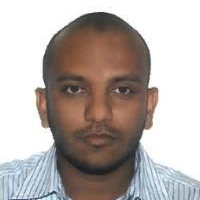
Rami Zewail
Work place: University of Alberta, Edmonton, Alberta, Canada
E-mail: rami.zewail@smartempower.ca
Website:
Research Interests: Medical Image Computing, Image Processing, Image Manipulation, Image Compression, Medical Informatics
Biography
Ahmed S. Hag-ElSafi (Khartoum,1978) holds a BSc and a MSc of Electronics and Communications Engineering, Arab Academy for Science and Technology, 2002 and 2004 respectively. He has 15 years of experience of research and industrial development in the areas of embedded systems and machine learning. He has published more than fifteen papers in the areas of IOT security, biometrics, machine learning and predictive analysis, and medical image processing. He is currently the Staff Researcher-Machine Learning at Smart Empower innovation labs Inc., Alberta, Canada. Mr. Hag-ElSafi is a member the Smart City Alliance in Alberta, Canada and the Association of Professional Engineers and Geoscientists of Alberta (APEGA)
Author Articles
Appearance-based Salient Features Extraction in Medical Images Using Sparse Contourlet-based Representation
By Rami Zewail Ahmed Hag-ElSafi
DOI: https://doi.org/10.5815/ijigsp.2017.09.01, Pub. Date: 8 Sep. 2017
Medical experts often examine hundreds of x-ray images searching for salient features that are used to detect pathological abnormalities. Inspired by our understanding of the human visual system, automated salient features detection methods have drawn much attention in the medical imaging research community. However, despite the efforts, detecting robust and stable salient features in medical images continues to constitute a challenging task. This is mainly attributed to the complexity of the anatomical structures of interest which usually undergo a wide range of rigid and non-rigid variations.
In this paper, we present a novel appearance-based salient feature extraction and matching method based on sparse Contourlet-based representation. The multi-scale and directional capabilities of the Contourlets is utilized to extract salient points that are robust to noise, rigid and non-rigid deformations. Moreover, we also include prior knowledge about local appearance of the salient points of the structure of interest. This allows for extraction of robust stable salient points that are most relevant to the anatomical structure of interest.
Other Articles
Subscribe to receive issue release notifications and newsletters from MECS Press journals